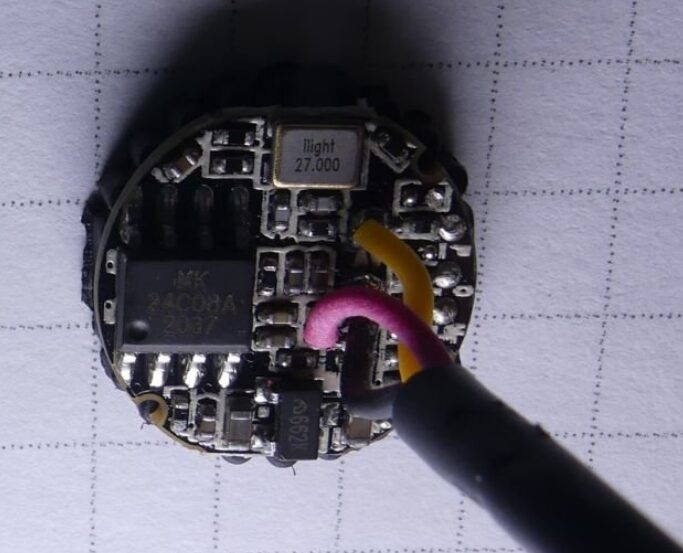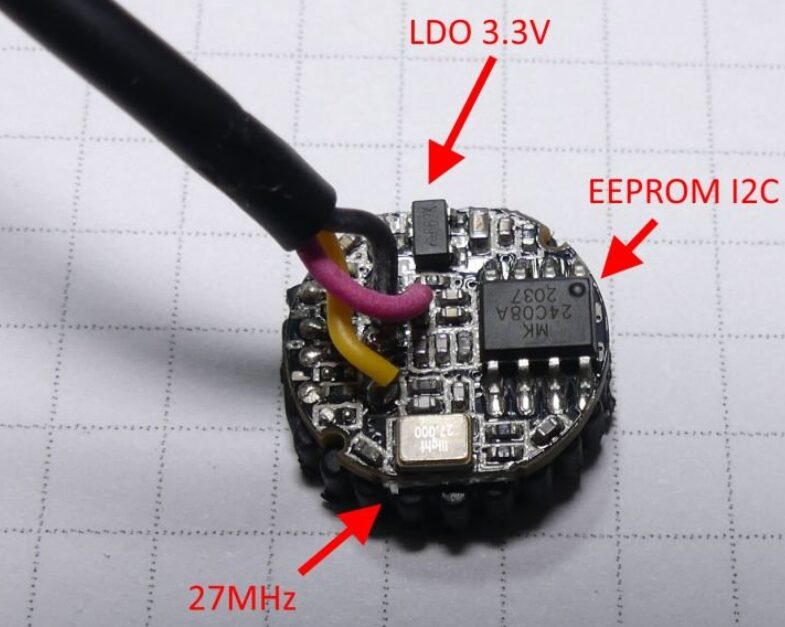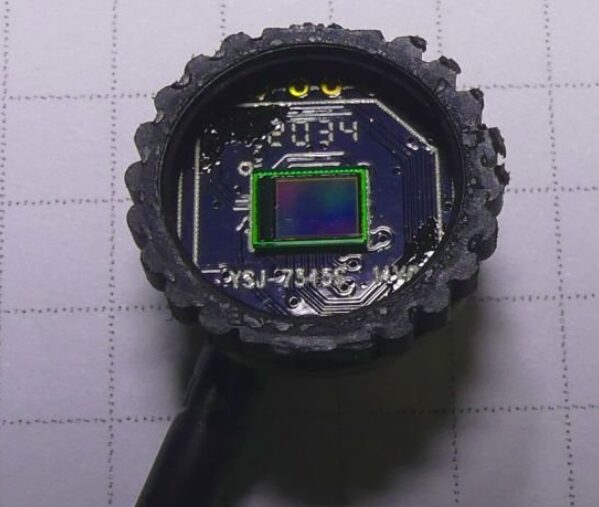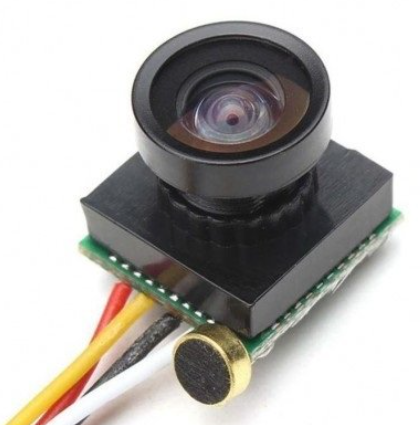During the home renovation process, the renovation team discovered a screw connected to a cable, and the electronic device at the end of the cable turned out to be a CCTV camera. Although the casing broke after unscrewing the screw, I was still able to capture the internals of the camera (the following photos show a similar device, but in fact, the head of the screw is larger and black).

Why was the CCTV camera covered? It’s hard to say; I suspect it was to reduce the unsightly appearance caused by the camera, as I don’t believe in the spy theory. The external camera is housed in a standard casing, with cables converging to a single point.
The CCTV camera module is very small, with only three wires leading from the PCB: V+ power, GND, and PAL video signal output.

Three main components can be seen on the PCB:
-
3.3V LDO voltage regulator;
-
-
27MHz crystal oscillator.

There are four unconnected solder points, perhaps to set other parameters in another version of the camera.

On the other side of the circuit board, the CMOS image sensor behind the lens can be seen. Due to the lack of additional circuits, the matrix scanning and video signal generation must be built into the sensor. The integration level is quite good!
I remember that on the PCB of larger board cameras within CCTV housings, there were numerous chips for matrix scanning and CVBS signal generation.

I checked the module and found it damaged, with no CVBS signal, and a current consumption of about 30mA. I suspect that a voltage was applied to the video output or the power polarity was reversed, or it could have been caused by electrostatic discharge/overvoltage.
The miniaturization of the device is impressive, although slightly larger cameras now typically feature Wi-Fi communication or micro SD card slots and built-in lithium-ion batteries.
Finally, here are a few product promotional images of this camera that I found online:



Author: TechEkspert, Source: EDN sister site elektroda.pl
Reference Original: Wnętrze miniaturowej ukrytej kamery, translated by Franklin Zhao.
Copyright Statement: This article is an original article by Electronic Technology Design, all rights reserved, unauthorized reproduction is prohibited.










